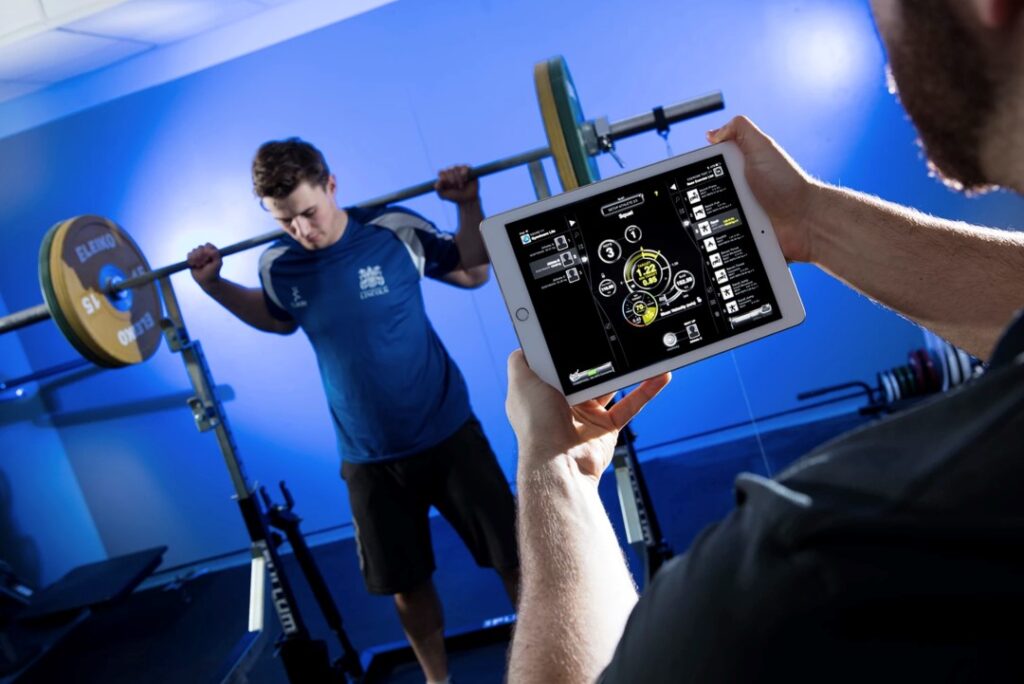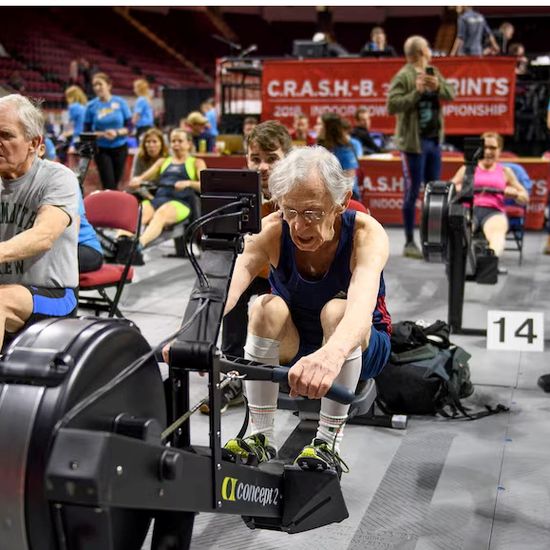This week in the world of sports science, here’s what happened…
- Choose your velocity-based training device wisely!
- A scientific insight into a 92-year-old World Champion!
- Is the rebound countermovement jump a valid test?
Choose your velocity-based training device wisely!

Velocity-based training (VBT) serves as a significant tool that provides real-time feedback to athletes and coaches. However, a recent study underscores the importance of careful selection when it comes to the brand of velocity-based equipment utilised by coaches.
The study engaged 18 participants performing the Bulgarian Split Squat exercise, during which mean velocity and peak velocity were simultaneously recorded using three commercial devices: GymAware (a linear position transducer), PUSH (an accelerometer), and My Lift (a smartphone application).
The findings revealed that GymAware is a valid device for measuring both mean velocity and peak velocity during unilateral exercises such as the Bulgarian Split Squat. Although the study recognises PUSH as a cost-effective alternative, it displayed poor validity, particularly regarding the measurement of peak velocity. While other research may have identified My Lift as a valid option, the authors of this study found significant limitations in its validity, especially when assessing Bulgarian Split Squats and lighter loads.
As a result of this study, GymAware is the most valid brand for velocity-based training compared to PUSH and My Lift. If you would like to learn more about velocity-based training, check out our course: Velocity-Based Training and our podcast episode: Using VBT To Smash Performance Goals.
A scientific insight into a 92-year-old World Champion!

Recently, an extraordinary story has captured widespread attention in my home country, Ireland, centring on Richard Morgan, who became a rowing World Champion at the age of 92. What is particularly remarkable about this achievement is that Morgan commenced his training at the age of 73, having maintained a largely sedentary lifestyle for the majority of his adult life.
Notably, Morgan’s grandson, Lorcan Daly, a distinguished sports scientist, was inspired by his grandfather’s transformation and conducted extensive scientific research on him. The findings of this research yielded striking results. Despite his advanced age, Morgan exhibited 47 kilograms of muscle mass, constituting 80% of his body weight, and maintained a body fat percentage of only 14%. During a 2000-meter rowing time trial, his heart rate peaked at 151 beats per minute, potentially marking one of the highest maximum heart rates ever recorded for an individual aged 85. Remarkably, it took only 25 seconds for him to reach a steady state, a value comparable to normative data for a healthy 25-year-old.
Morgan’s training regimen, which included both rowing and resistance training, effectively preserved his cardiovascular fitness and muscle mass, aligning with best practices aimed at mitigating age-related declines in muscle function and aerobic capacity. While Morgan’s accomplishments are ultra-impressive, this story emphasises that it’s NEVER too late to start exercising and the significant impact that exercise can have on one’s health and overall quality of life.
Unfortunately, Morgan passed away last year; however, his remarkable transformation and achievements deserve to be celebrated. They are further validated by the commendable scientific research conducted by his grandson, which is well worth checking out!
Is the rebound countermovement jump a valid test?
The rebound countermovement jump (CMJ) assessment has become increasingly popular among strength and conditioning practitioners in recent years. The underlying rationale for utilising the rebound CMJ is that the initial phase parallels a standard CMJ, while the subsequent portion simulates a drop jump. This duality suggests that the rebound CMJ assessment could effectively consolidate the valuable insights from both tests into a single assessment.
Nevertheless, a recent study has called this questioned this assumption. The study involved 46 collegiate male American football players who underwent testing on the standard CMJ, drop jumps from heights of 30 cm and 45 cm, as well as the rebound CMJ, utilising force plates for measurement.
The results indicated that, while many parameters during the first phase of the rebound CMJ were comparable to those of the standard CMJ, the time to take-off was longer, and the jump height achieved was significantly lower in the rebound CMJ when compared to the standard CMJ. Moreover, the reactive strength index obtained from the second phase of the rebound CMJ was significantly different from the reactive strength index recorded during the drop jumps from both the 30 cm and 45 cm heights.
While the rebound CMJ may appear to be convenient and efficient, this study highlights that it fails to adequately represent an athlete’s maximum jump height and reactive strength. If you would like to learn more about the reactive strength index, check out our course: Reactive Strength Index (here).
From us this week:
>> New course: Cardiovascular Diseases
>> New podcast: Fear is your friend: A Champion’s Paradox
>> New infographic: Dynamic Correspondence
>> New article: Hydrotherapy
Access to a growing library of sports science courses
SFS Academy is an all-access membership to premium sports science education.
With SFS Academy, you’ll learn from some of the best coaches around the world as they teach you how to apply the latest research and practice with your athletes.




